Energy Management Method for Fast-Charging Stations with the Energy Storage System to Alleviate the Voltage Problem of the Observation Node
Abstract
:1. Introduction
2. Problem Formulation
2.1. FCS Model
2.2. Impact on the Radial Distribution Network
2.3. Optimization Model
3. Analytical Assessment Model of the Nodal Voltage Change
3.1. The Radial Distribution Network Model
3.2. The AMM
3.3. The Control Characteristic of βo
4. The VCOM
| Algorithm 1: Calculate |
| 1: INPUT: This algorithm knows the acceptable probability of the nodal voltage change at the observation node () at time interval κ, the initial nodal load at each node at time interval κ, the adjustment step size of (∆), basic information of the distribution network, which can be used to calculate power flow by using traditional Newton power flow method. |
| 2: OUTPUT: = [, ,…, ] |
| 3: PROCEDURE: |
| 4: Obtain the nodal voltage at each node by using traditional Newton power flow method. |
| 4: for o = 1 to n do |
| 5: Obtain according to Equation (31) |
| 6: Obtain Foκ(.) according to Equation (32) |
| 7: for I = 1 to N do |
| 8: if (.) ≥ |
| 9: ←—∆ |
| 10: Update Foκ(.) by plugging into Equation (32) |
| 11: else |
| 12 ← |
| 13: end if |
| 14: end for |
| 15: end for |
5. Case Study and Discussion
5.1. The Performance of the AMM
5.2. The Effect of the Proposed Day-Ahead ESS Strategy
- (i)
- Case 1: the traditional PV-ESS complementarity strategy is used for the ESS.
- (ii)
- Case 2: the strategy proposed in this paper is used for the ESS.
6. Conclusions
- A voltage change optimization model (VCOM) considering the randomness of the EV load is constructed to alleviate the voltage change problem caused by EV fast charging and it can be easily solved by traditional intelligent algorithms, such as GA.
- An analytical assessment model (AAM) of the nodal voltage change with shorter computational time and higher reliability is proposed.
Author Contributions
Funding
Conflicts of Interest
Nomenclature
| Total grid load at the FCS j at κth time interval. | |
| Expectation of . | |
| . | Standard change of |
| Output power of the PV at the FCS j at κth time interval. | |
| Charge–discharge active power of the ESS at the FCS j at κth time interval. | |
| The NFCL at the node j with the FCS at κth time interval. | |
| The EV’s charging load at the FCS j at κth time interval. | |
| Expectation of . | |
| Standard deviation of . | |
| Rated capacity of the service transformer at the FCS j. | |
| Nodal voltage change limit at the observation node o at κth time interval. | |
| Shape parameters for the nodal voltage change at observation node o at κth time interval. | |
| Control parameter for the nodal voltage change at observation node o at κth time interval. | |
| xκ | Optimization variable at κth time interval. |
| pp | Initial population number. |
| Us | Phase voltage at the source node s. |
| Ud | Phase voltage at the load node d. |
| Uo | Phase voltage at the observation node o. |
| Conjugate complex draw power at node d. | |
| Conjugate phase voltage at node d. | |
| Zod | Shared impedance between node d and observation node o from the source node s. |
| Rated upper limit of the charge-discharge active power of the ESS at the FCS j. | |
| Rated lower limit of the charge-discharge active power of the ESS at the FCS j. | |
| Dynamic lower limit of the charge-discharge active power of the ESS at the FCS j at the κth time interval. | |
| . | Active power output of the ESS at the FCS j at κth time interval. |
| A preset constant for restraining . | |
| SOC | State of charge. |
| The initial SOC of the ESS at the FCS j at the beginning of the day. | |
| A preset constant for restraining the SOC for the FCS j. | |
| Rated upper limit of the SOC. | |
| Rated lower limit of the SOC. | |
| Value of the SOC of the ESS at the FCS j at κth time interval. | |
| Γ(.) | Gamma function. |
| Φ(.) | Normal probability distribution function. |
References
- Yowpeng, L.; Mustapa, S.I.; Hashim, A.H. Climate change challenges on CO2 emission reduction for developing countries: A case for Malaysia’s agenda for action. Int. J. Clim. Chang. Impacts Responses 2010, 2, 9–26. [Google Scholar]
- Raslavičius, L.; Azzopardi, B.; Keršys, A. Electric vehicles challenges and opportunities: Lithuanian review. Renew. Sustain. Energy Rev. 2015, 42, 786–800. [Google Scholar] [CrossRef]
- IEA Global EV Outlook 2019. Available online: https://www.iea.org. (accessed on 10 November 2021).
- Shareef, H.; Islam, M.M.; Mohamed, A. A review of the stage-of-the-art charging technologies, placement methodologies, and impacts of electric vehicles. Renew. Sustain. Energy Rev. 2016, 64, 403–420. [Google Scholar] [CrossRef]
- Hilton, G.; Kiaee, M.; Bryden, T.S. A stochastic method for prediction of the power demand at high rate EV chargers. IEEE Trans. Transp. Electrif. 2018, 99, 1–9. [Google Scholar] [CrossRef] [Green Version]
- Mu, Y.; Wu, J.; Jenkins, N. A Spatial-Temporal model for grid impact analysis of plug-in electric vehicles. Appl. Energy 2014, 114, 456–465. [Google Scholar] [CrossRef] [Green Version]
- Xiong, J.; Zhang, K.; Liu, X. Investigating the impact of plug-in electric vehicle charging on power distribution systems with the integrated modeling and simulation of transportation network. In Proceedings of the IEEE Conference and Expo Transportation Electrification Asia-Pacific, Beijing, China, 31 August–3 September 2014. [Google Scholar]
- Onar, C.; Khaligh, A. Grid interactions and stability analysis of distribution power network with high penetration of plug-in hybrid electric vehicles. In Proceedings of the Applied Power Electronics Conference & Exposition, Palm Springs, CA, USA, 21–25 February 2010. [Google Scholar]
- Burgt, J.; Vera, S.P.; Wille-Haussmann, B. Grid impact of charging electric vehicles; study cases in Denmark, Germany and The Netherlands. In Proceedings of the 2015 IEEE Eindhoven PowerTech, Eindhoven, The Netherlands, 29 June–2 July 2015. [Google Scholar]
- Ramadan, H.; Ali, A.; Farkas, C. Assessment of plug-in electric vehicles charging impacts on residential low voltage distribution grid in Hungary. In Proceedings of the 2018 6th International Istanbul Smart Grids and Cities Congress and Fair (ICSG), Istanbul, Turkey, 25–26 April 2018; pp. 105–109. [Google Scholar]
- Elnozahy, S.; Salama, A. A Comprehensive Study of the Impacts of PHEVs on Residential Distribution Networks. IEEE Trans. Sustain. Energy 2013, 5, 332–342. [Google Scholar] [CrossRef]
- Deng, J.; Shi, J.; Liu, Y. Application of a hybrid energy storage system in the fast charging station of electric vehicles. IET Gener. Transm. Distrib. 2016, 10, 1092–1097. [Google Scholar] [CrossRef]
- Muntaser, A.; Elwarfalli, H.; Kumar, J.; Subramanyam, G. Development of advanced energy storage system using fuzzy control. In Proceedings of the Aerospace and Electronics Conference, Dayton, OH, USA, 25–29 July 2016. [Google Scholar]
- Kornsiriluk, V. Study of Energy Storage System: Concept of Using ESS in EV Charging Stations in MEA. In Proceedings of the 2019 IEEE PES GTD Grand International Conference and Exposition Asia (GTD Asia), Bangkok, Thailand, 19–23 March 2019. [Google Scholar]
- Bo, S.; Dragičević, T.; Freijedo, F.D. A Control Algorithm for Electric Vehicle Fast Charging Stations Equipped with Flywheel Energy Storage Systems. IEEE Trans. Power Electron. 2016, 31, 6674–6685. [Google Scholar]
- Islam, M.S.; Mithulananthan, N.; Lee, K.Y. Development of Impact Indices for Performing Charging of a Large EV Population. IEEE Trans. Veh. Technol. 2018, 67, 866–880. [Google Scholar] [CrossRef]
- Krunic, S.; Krcmar, I.; Rajakovic, N. An Improved Neural Network Application for Short-Term Load Forecasting in Power Systems. Electr. Mach. Power Syst. 2000, 28, 703–721. [Google Scholar]
- Hong, L.; Chong, T.; Han, J. Probabilistic load flow analysis of active distribution network adopting improved sequence operation methodology. Iet Gener. Transm. Distrib. 2017, 11, 2147–2153. [Google Scholar]
- Lozano, M.; Herrera, F.; Cano, J.R. Replacement strategies to preserve useful diversity in steady-state genetic algorithms. Inf. Sci. 2008, 178, 4421–4433. [Google Scholar] [CrossRef]
- Yuan, X.; Elhoseny, M.; El-Minir, H.K.; Riad, A.M. A Genetic Algorithm-Based, Dynamic Clustering Method towards Improved WSN Longevity. J. Netw. Syst. Manag. 2017, 25, 21–46. [Google Scholar] [CrossRef]
- Elhoseny, M.; Tharwat, A.; Farouk, A. K-Coverage Model Based on Genetic Algorithm to Extend WSN Lifetime. IEEE Sens. Lett. 2017, 1, 1–4. [Google Scholar] [CrossRef]
- Chuang, L.-L.; Shih, Y.-S. Approximated distributions of the weighted sum of correlated chi-squared random variables. J. Stat. Plan. Inference 2012, 142, 457–472. [Google Scholar] [CrossRef]
- Kim, I.; Xu, S. Bus voltage control and optimization strategies for power flow analyses using Petri net approach. Int. J. Electr. Power Energy Syst. 2019, 112, 353–361. [Google Scholar] [CrossRef]
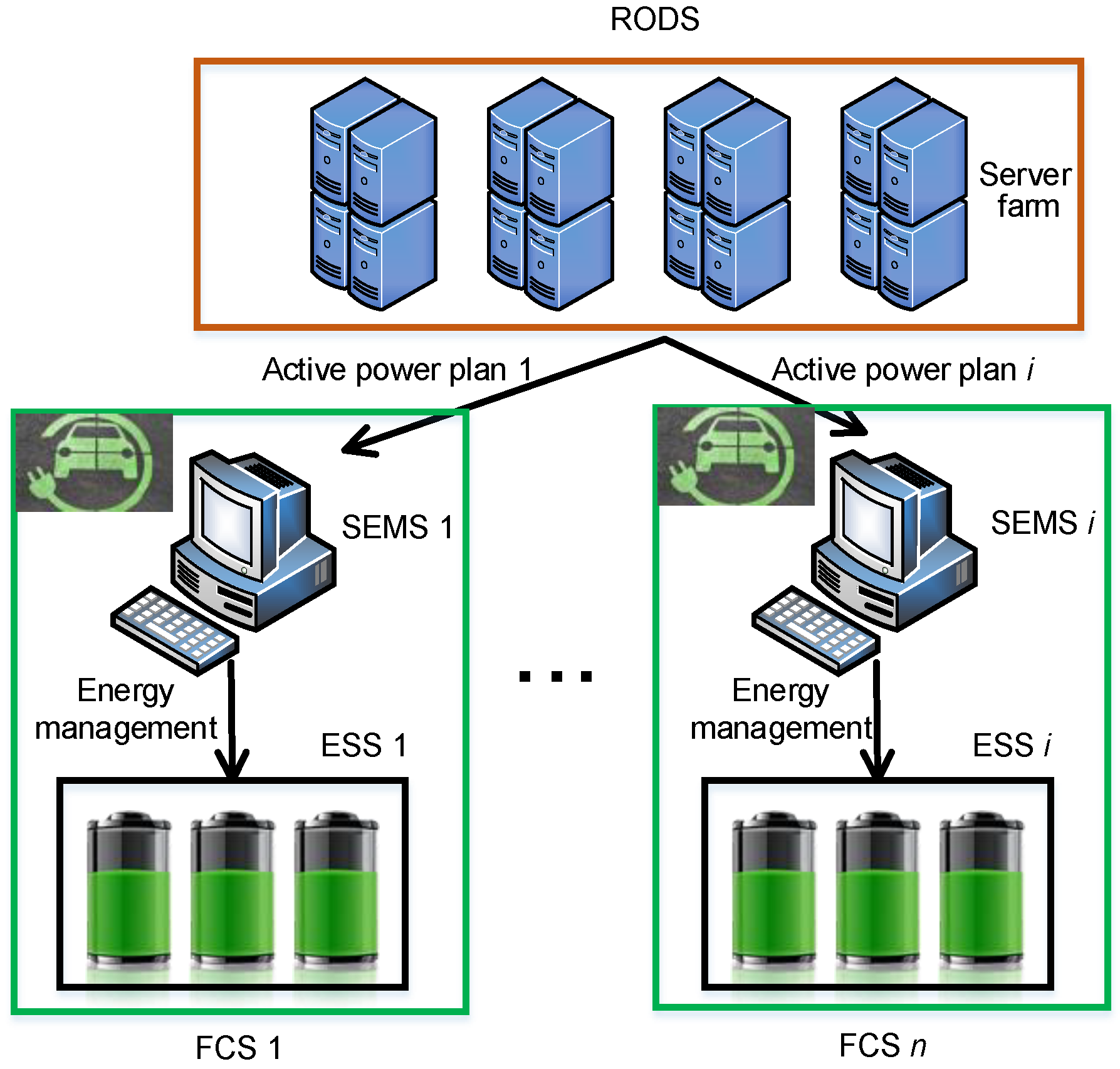



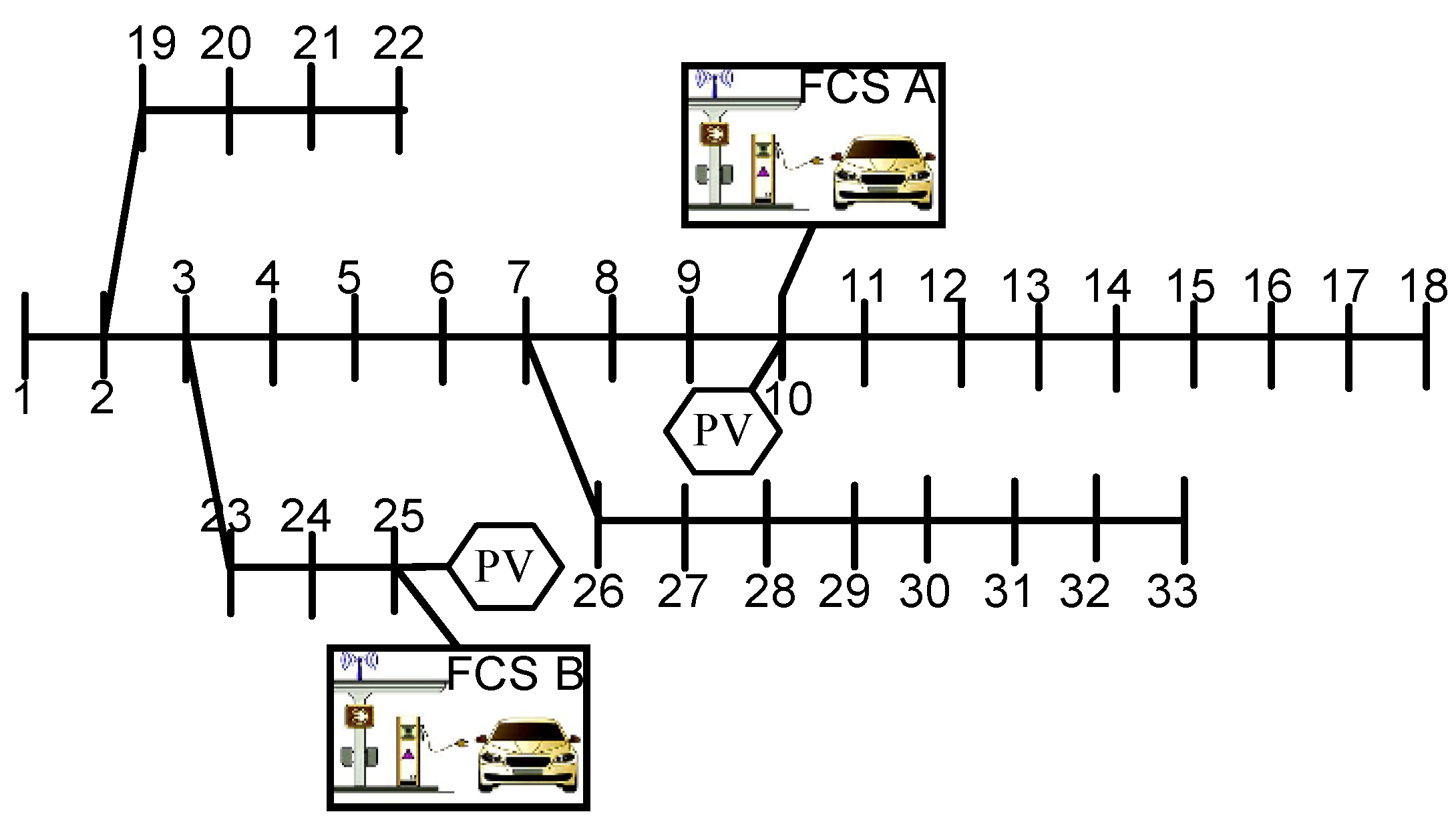


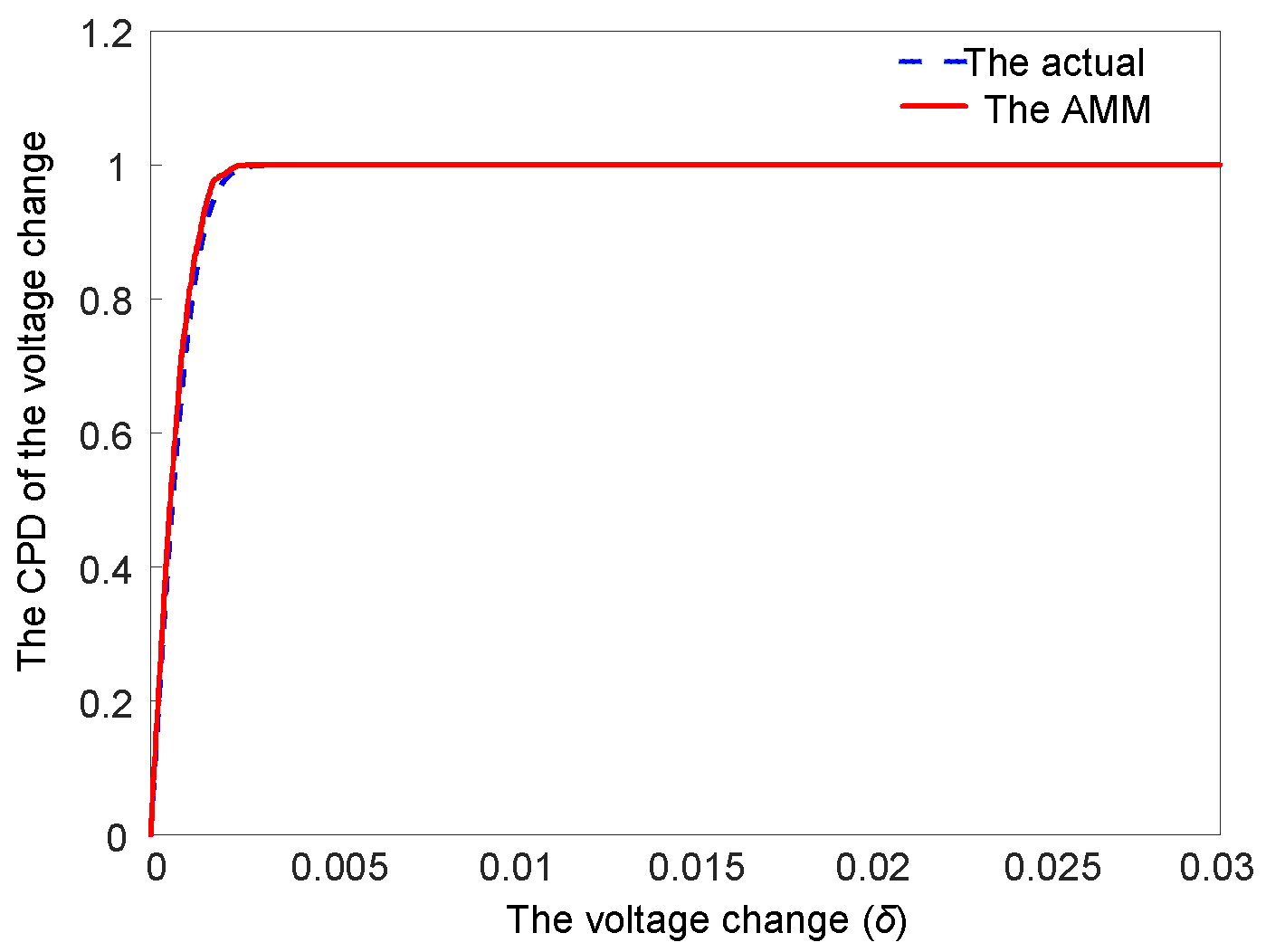
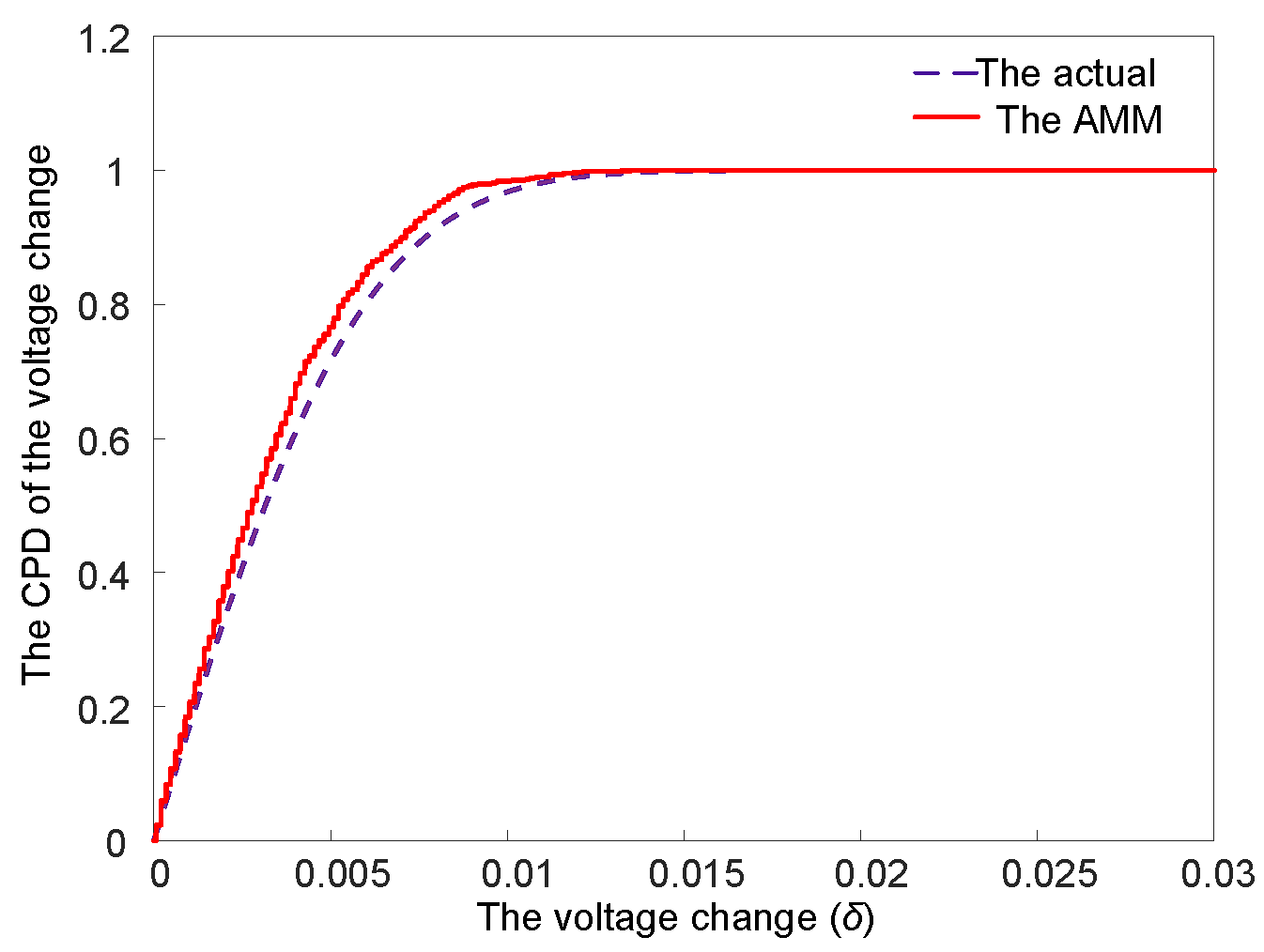
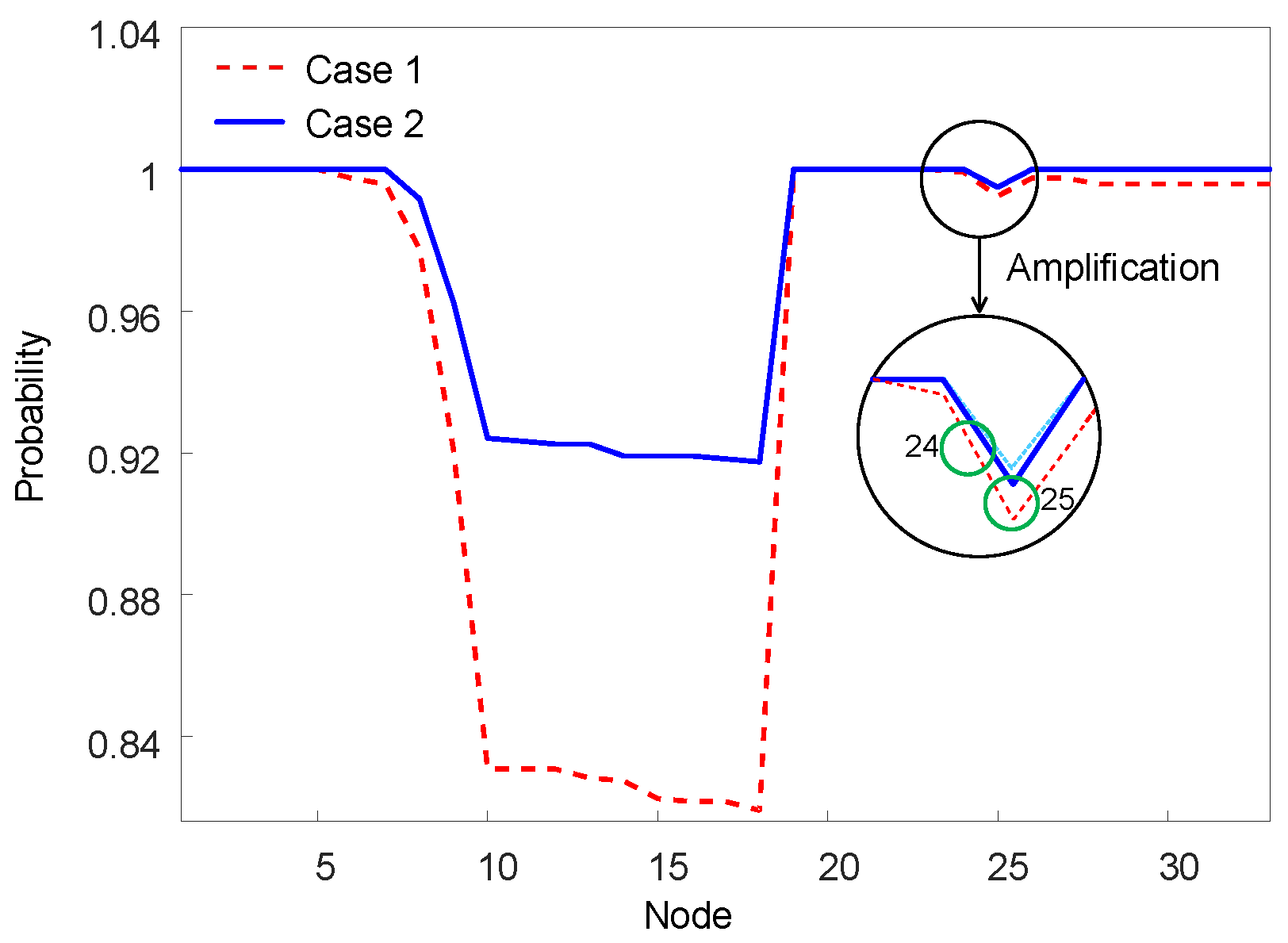
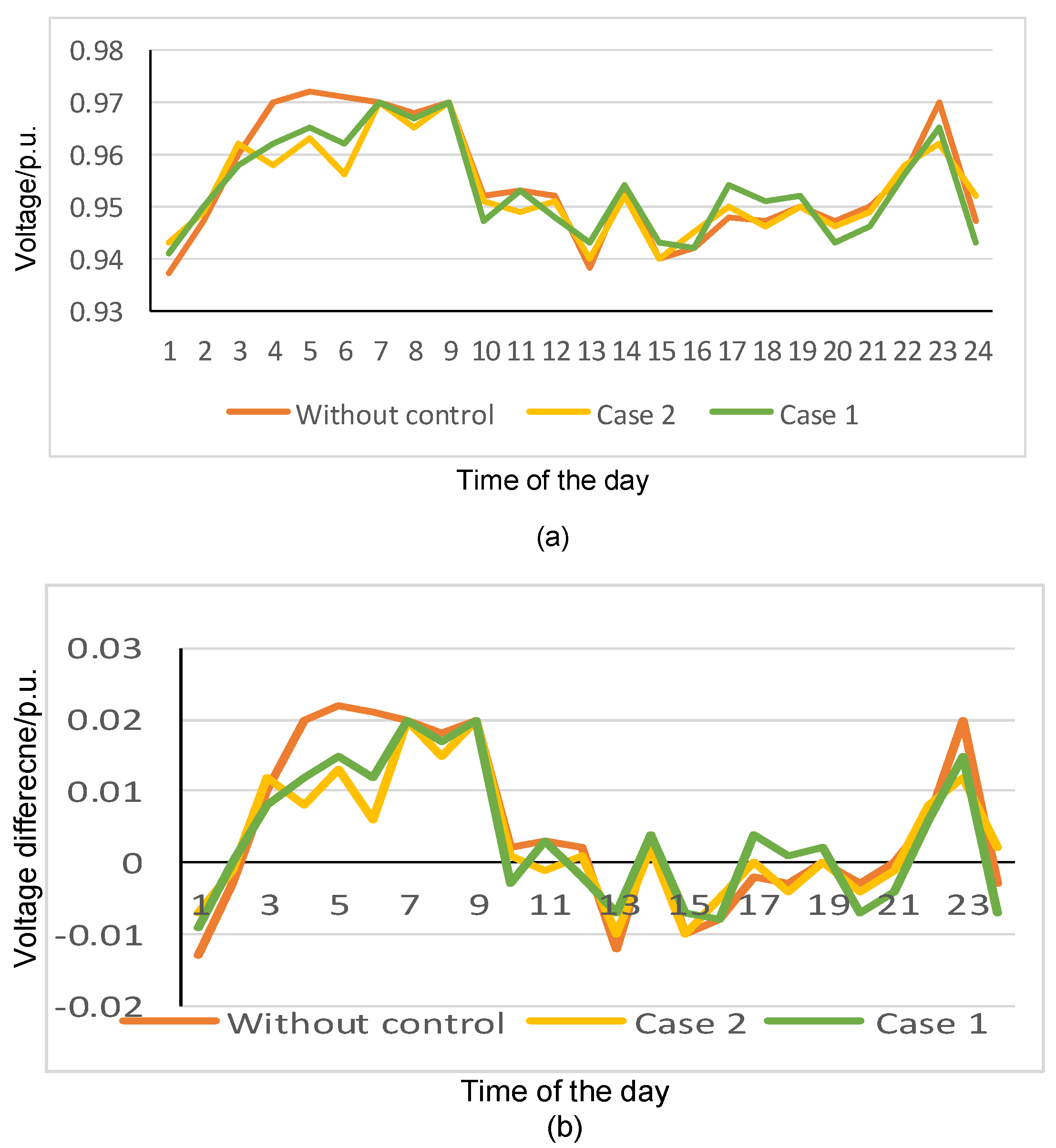
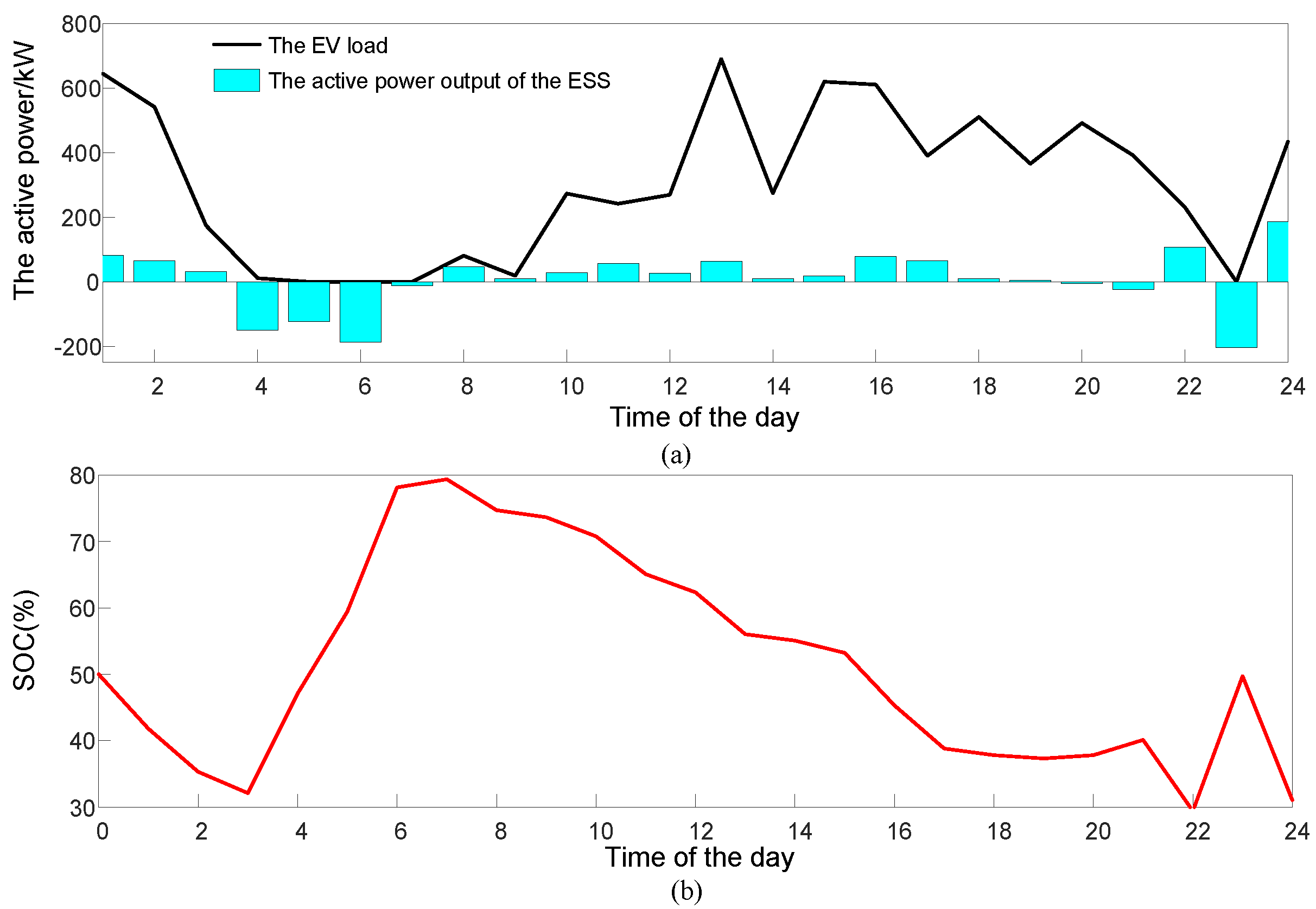

| Parameter | Description | Unit | Value |
|---|---|---|---|
| STrans | Rated capacity of the service transformer. | kVA | 1000 |
| SPV | Rated capacity of the PV. | kWp | 50 |
| PS+ | Rated upper boundary of the charge-discharge active power of the ESS. | kW | 250 |
| PS− | Rated lower boundary of the charge-discharge active power of the ESS. | kW | −250 |
| SOC0 | The initial SOC for the ESS at the beginning of the day. | % | 50 |
| SOC+ | Rated upper boundary of the SOC of the ESS. | % | 30 |
| SOC− | Rated lower boundary of the SOC of the ESS. | % | 80 |
| ES | Rated capacity of the ESS. | kWh | 1000 |
| κ | The EV Load at κth Time Interval/kW | |||
|---|---|---|---|---|
| 1~4 | N(789,1922) | N(532,2182) | N(167,1212) | E(40) |
| 5~8 | E(40) | E(40) | N(223,402) | N(108,742) |
| 9~12 | N(107,952) | N(190,1322) | N(294,1592) | N(406,1532) |
| 13~16 | N(547,1442) | N(572,1692) | N(575,1852) | N(352,1982) |
| 17~20 | N(207,1632) | N(306,1452) | N(312,1632) | N(309,1802) |
| 21~24 | N(328,1802) | N(350,1432) | N(494,1542) | N(690,1802) |
| κ | The EV Load at κth Time Interval/kW | |||
|---|---|---|---|---|
| 1~4 | N(789,1922) | N(532,2182) | N(167,1212) | E(40) |
| 5~8 | E(40) | E(40) | E(40) | N(108,742) |
| 9~12 | N(107,952) | N(190,1322) | N(294,1592) | N(406,1532) |
| 13~16 | N(547,1442) | N(572,1692) | N(575,1852) | N(352,1982) |
| 17~20 | N(207,1632) | N(306,1452) | N(312,1632) | N(309,1802) |
| 21~24 | N(328,1802) | N(350,1432) | E(40) | N(690,1802) |
| Observation Node | The Correlation Coefficient | |||||||
|---|---|---|---|---|---|---|---|---|
| 2~9 | 0.99 | 0.99 | 0.99 | 0.99 | 0.99 | 0.99 | 0.99 | 0.99 |
| 10~17 | 0.99 | 0.99 | 0.99 | 0.99 | 0.99 | 0.99 | 0.99 | 0.99 |
| 18~25 | 0.99 | 0.99 | 0.99 | 0.99 | 0.99 | 0.99 | 0.99 | 0.99 |
| 26~33 | 0.99 | 0.99 | 0.99 | 0.99 | 0.99 | 0.99 | 0.99 | 0.99 |
| Methods | Average Time, s | CPU, % |
|---|---|---|
| MCPFL | 1.527 | 2 |
| AMM | 20.313 | 11 |
Publisher’s Note: MDPI stays neutral with regard to jurisdictional claims in published maps and institutional affiliations. |
© 2021 by the authors. Licensee MDPI, Basel, Switzerland. This article is an open access article distributed under the terms and conditions of the Creative Commons Attribution (CC BY) license (https://creativecommons.org/licenses/by/4.0/).
Share and Cite
Ye, R.; Huang, X.; Yang, Z. Energy Management Method for Fast-Charging Stations with the Energy Storage System to Alleviate the Voltage Problem of the Observation Node. World Electr. Veh. J. 2021, 12, 234. https://doi.org/10.3390/wevj12040234
Ye R, Huang X, Yang Z. Energy Management Method for Fast-Charging Stations with the Energy Storage System to Alleviate the Voltage Problem of the Observation Node. World Electric Vehicle Journal. 2021; 12(4):234. https://doi.org/10.3390/wevj12040234
Chicago/Turabian StyleYe, Rui, Xueliang Huang, and Zexin Yang. 2021. "Energy Management Method for Fast-Charging Stations with the Energy Storage System to Alleviate the Voltage Problem of the Observation Node" World Electric Vehicle Journal 12, no. 4: 234. https://doi.org/10.3390/wevj12040234
APA StyleYe, R., Huang, X., & Yang, Z. (2021). Energy Management Method for Fast-Charging Stations with the Energy Storage System to Alleviate the Voltage Problem of the Observation Node. World Electric Vehicle Journal, 12(4), 234. https://doi.org/10.3390/wevj12040234





